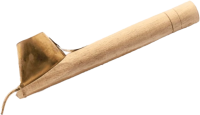
Batik is no longer just an exquisite fabric; it has become a symbol of prestige, an art form, and an investment in culture. From royal courts to high-fashion runways, batik has transcended time and tradition, earning its place as a coveted luxury item. Owning a piece of fine batik today is like holding a slice of Indonesia’s artistic soul, woven with history, craftsmanship, and opulence.
Imagine draping yourself in a batik tulis masterpiece, meticulously hand-drawn with natural dyes and intricate patterns—a creation so unique it rivals the allure of haute couture.
The Art of Craftsmanship, the Allure of Exclusivity
What sets luxury batik apart from its mass-produced counterparts is the craftsmanship and exclusivity behind each piece. Batik tulis and batik cap made by skilled artisans are painstakingly created, often requiring weeks or even months to complete. These artisans use techniques passed down through generations, combining tradition with unparalleled attention to detail.
Take, for instance, the highly sought-after Batik Lasem, known for its vibrant colors and intricate Chinese-inspired motifs. Its creation involves a delicate balance of waxing, dyeing, and layering, resulting in patterns so intricate they resemble paintings. Another example is Batik Nitik from Yogyakarta, characterized by its geometric precision and subtle elegance.
Such masterpieces are not just fabrics but works of art. Their limited production adds to their desirability, making them rare collectibles for connoisseurs and investors alike.
Batik as an Heirloom and Investment
In the realm of luxury, batik stands alongside fine jewelry and rare paintings. High-quality pieces, especially antique or limited-edition batik, can appreciate in value over time. Collectors often compare owning an iconic batik tulis to possessing a priceless Monet or Van Gogh—only in this case, you can wear it.
Prestigious auction houses, such as Sotheby’s, have showcased Indonesian batik alongside global treasures, signaling its rising status as a cultural and financial asset. The intricate Batik Cirebon designs, for example, have fetched staggering prices due to their historical significance and masterful artistry.
But beyond its monetary value, batik holds deep sentimental significance. Families often pass down heirloom pieces, treating them as sacred treasures that carry stories of their ancestors. Owning a luxury batik is like owning a legacy—a piece of history that transcends generations.
Fashion’s Love Affair with Batik
Batik has also found its way into the world of high fashion, where its timeless appeal captivates designers and fashionistas alike. Luxury brands and designers, both local and international, are reinterpreting batik for the modern wardrobe.
Indonesian designer Iwan Tirta, often dubbed the “King of Batik,” brought batik to global prominence with his luxurious creations worn by world leaders and celebrities. Today, modern labels such as Toton and Biyan continue to elevate batik, blending traditional patterns with contemporary silhouettes to create breathtaking pieces that grace international runways.
The allure of batik lies in its versatility. It seamlessly transitions from traditional attire to red-carpet gowns, from ceremonial wraps to casual-chic outerwear. Whether it’s a regal kain panjang or a sleek batik-inspired blazer, the fabric’s richness elevates any look, making it a favorite among those who appreciate artistry and sophistication.
Batik’s journey from cultural heritage to luxury collection is a testament to its enduring beauty and significance. It is not just fabric but a celebration of Indonesia’s artistry, a symbol of pride, and a treasure worth cherishing. A luxury batik piece is not merely owned; it is celebrated, admired, and revered—a living testament to the timeless elegance of Indonesian culture.
